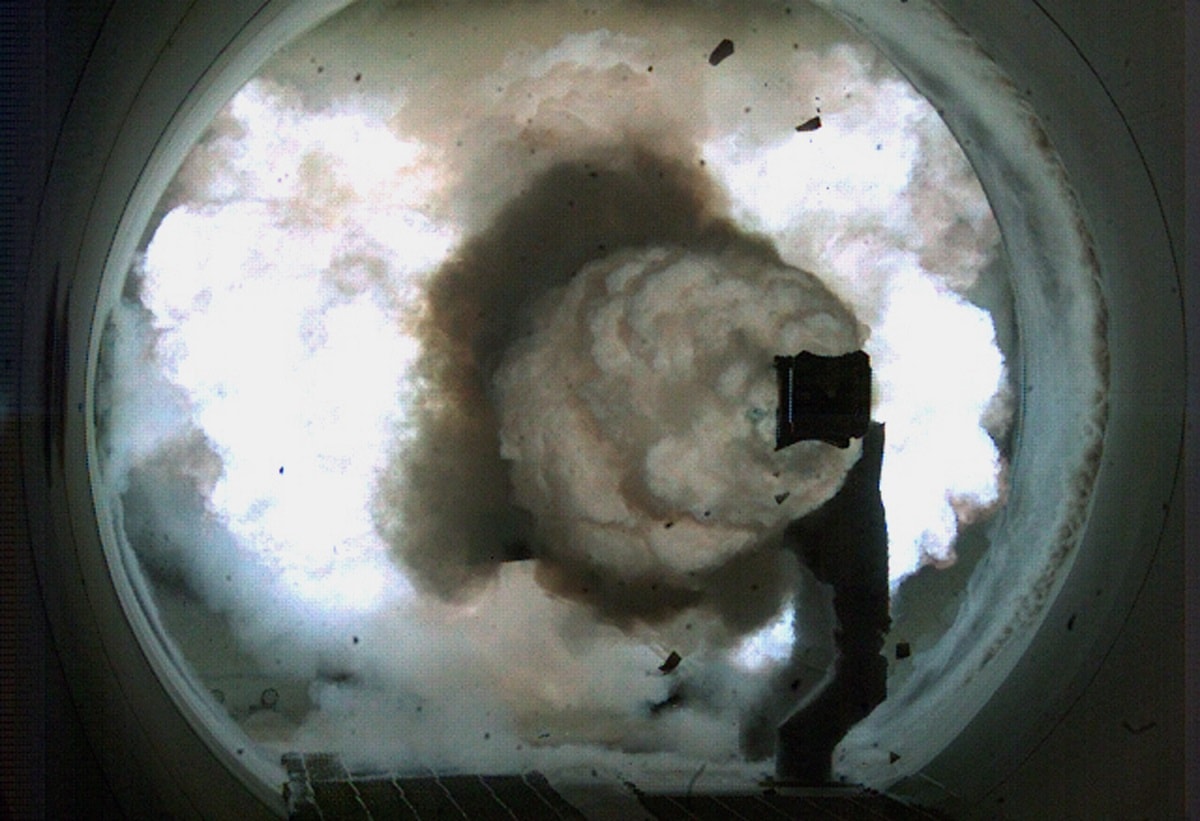Key Points: Japan is successfully advancing its electromagnetic railgun program, with ongoing ship-based tests aboard the JS Asuka showcasing the weapon’s potential.
-Designed to counter hypersonic missiles and saturation attacks, the railgun fires projectiles at Mach 6+ speeds using electricity.
-Japanese researchers have reportedly overcome key hurdles like rail erosion after repeated firing (120+ rounds).
-This progress, achieved with relatively modest funding (~$6.5M), contrasts sharply with the US Navy suspending its $500M railgun research in 2021.
-Japan’s railgun promises a cost-effective, high-volume defense capability vital for addressing modern naval threats.
Japan Has a Railgun
Japan’s efforts to build and develop an electromagnetic railgun, a futuristic weapon that fires projectiles using electricity, appear to have been successful.
The Japan Maritime Self-Defense Force (JMSDF) released an image of its state-of-the-art railgun on April 18. It is currently undergoing testing aboard the test ship JS Asuka.
The Japanese ship-mounted railgun offers a cost-effective and rapid response to potential missile saturation threats by utilizing electromagnetic energy to launch projectiles at hypersonic velocities. In this case, it would be to defend itself against Chinese and Russian hypersonic missiles.
The Japanese Ministry of Defense’s railgun development is conducted by the Ground Systems Research Center (GSRC), a division of the Acquisition, Technology & Logistics Agency (ATLA). ATLA began full-scale railgun development in 2016. Under the name “Research on Electromagnetic Acceleration Systems,” the research was conducted from fiscal year 2016 to fiscal year 2022. Japan spent one billion yen on the research.
Copper was initially used as the barrel rail material, but it was later changed to a different blend of metals and other materials during the research. As a result, it was confirmed that no significant damage occurred to the barrel rail even after 120 rounds were fired.
The railgun was first fired from a ship in October 2023.
How Would The Railgun Be Used?
According to ATLA, railguns are expected to be employed as naval or land-based artillery systems. In the maritime role, they are likely to intercept incoming anti-ship missiles, especially hypersonic cruise missiles. Hypersonic missiles are considered challenging to intercept due to their high speeds. By leveraging the railgun’s high velocity and extended range, a layered air defense network could be established with shipborne surface-to-air missiles.
The railgun system has enhanced muzzle velocity, reaching 2,000 meters per second, and improved stability, allowing for more than 120 rounds to be fired. This overcomes the challenges of rail erosion and projectile flight instability. Current research aims to transition to a complete “gun system,” integrating continuous firing, improvements in flight stability, and a tailored fire control system.
Japan’s railgun could bolster naval missile defenses, and research is underway to fire airburst munitions, which would send lethal fragments into a midair area to intercept hypersonic missiles or even aircraft.
Testing Moving Forward
Thus far, the tests have focused on firing a single round; however, efforts are underway to establish continuous firing capabilities. In actual wartime scenarios, railguns would need to continuously intercept incoming missiles or deliver multiple rounds against enemy vessels or ground targets.
An electromagnetic railgun has two rails to fire projectiles. An electric pulse creates an electromagnetic force to accelerate a projectile known as an armature, up to Mach 6, or six times the speed of sound. The projectile, a kinetic energy warhead, uses extreme or “hypersonic speed” to hit its target.
The U.S. Naval Research Laboratory said: “Without the need for dangerous explosives storage and handling, the Electromagnetic Railgun can potentially reach targets up to 20 times farther than conventional weapons.”
ATLA told the Japanese media that the prototype weapon system weighs 8 tons and has a cannon barrel 6 meters long.
The video released by Japan’s Defense Ministry in 2018 showed a 40mm-caliber developmental electromagnetic railgun and its support and test equipment. ATLA said the prototype railgun succeeded in firing a projectile at speeds of 2,297 meters per second in trials, equivalent to Mach 6.5.
On April 9, Self-Defense Fleet Commander Vice Adm. Katsushi Omachi visited the test ship JS Asuka (ASE-6102) to observe the status of the railgun. Asuka is assigned to the Fleet Research and Development Command, which also falls under the Self-Defense Fleet Command.
“In preparation for future combat, the Self Defense Fleet promotes research, development, and earlier introduction of equipment necessary for the JMSDF in close collaboration with the ATLA and other organizations, as well as continues to build up its defense posture to protect Japanese citizens and the territorial waters,” a press release stated which included a picture of the railgun but provided no further details of the weapons system.
Japan collaborates with France and Germany’s Research Institute of Saint-Louis to advance railgun technologies, reflecting international scientific cooperation.
This technology would be very beneficial to the United States, where in operations against Iranian-proxy Houthi rebel forces from 2023 to 2025, the US expended hundreds of difficult-to-replace, multi-million-dollar missiles to shoot down relatively cheap drones and ballistic missiles, highlighting an unsustainable cost curve and dangerously shallow magazines.
Railguns can deliver many rounds at distances comparable to most missiles with the same lethality and accuracy while at lower costs and greater quantities. We should ask Japan to share this technology with us.
The US suspended research into its railgun efforts in 2021 after spending about $500 million.
About the Author:
Steve Balestrieri is a 19FortyFive National Security Columnist. He served as a US Army Special Forces NCO and Warrant Officer. In addition to writing for 19FortyFive, he covers the NFL for PatsFans.com and is a member of the Pro Football Writers of America (PFWA). His work was regularly featured in many military publications

